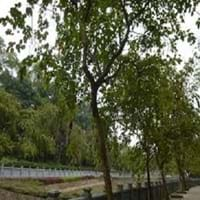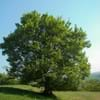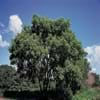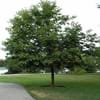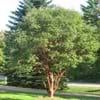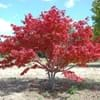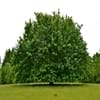What is
Life Span
Perennial
Biennial
Type
Tree
Tree
Origin
Europe, Northern Africa, Western Asia
South-Eastern Asia, Southeastern Asia, China
Types
A. campestre var. campestre - downy fruit
A. campestre var. leiocarpum (Opiz) Wallr. (syn. A. campestre subsp. leiocarpum) - hairless fruit
Purple Orchid Tree, White Orchid Tree, Bidi leaf tree
Number of Varieties
2
99+
Not Available
Habitat
Forest margins, gardens, Suburban areas, Woods
Forests, Mountain Slopes, Valley
USDA Hardiness Zone
5-8
9-13
AHS Heat Zone
8-4
12-9
Sunset Zone
2a, 2b, 3a, 3b, 4, 5, 6, 7, 8, 9, 14, 15, 16, 17
H1, H2, 9, 10, 11, 13, 18, 19, 20, 21, 22, 23
Habit
Oval or Rounded
Upright/Erect
Information
Plant Size
Minimum Height
910.00 cm
99+
760.00 cm
99+
Minimum Width
910.00 cm
23
17.80 cm
99+
Plant Color
Flower Color
Green, Light Yellow
Light Pink, Magenta, Violet
Flower Color Modifier
Bicolor
Bicolor
Fruit Color
Light Yellow, Light Pink, Light Green, Tan
Green, Sandy Brown
Leaf Color in Spring
Green, Light Green
Green, Gray Green
Leaf Color in Summer
Dark Green
Green, Gray Green
Leaf Color in Fall
Yellow, Gold, Tan
Green, Gray Green, Yellow green
Leaf Color in Winter
Not Available
Green, Gray Green, Yellow green
Shape
Leaf Shape
Maple shaped
Butterfly shaped
Thorns
No
No
Season
Plant Season
Spring, Summer, Fall
Spring, Summer
Growing Conditions
Sunlight
Full Sun, Partial Sun
Full Sun, Partial Sun
Growth Rate
Slow
Fast
Type of Soil
Clay, Loam, Sand
Clay, Loam, Sand
The pH of Soil
Acidic, Neutral, Alkaline
Acidic, Neutral
Soil Drainage
Average
Well drained
Bloom Time
Early Spring
Early Spring, Spring
Repeat Bloomer
No
No
Tolerances
Pollution, Soil Compaction
Drought
Care
Where to Plant?
Ground
Ground
How to Plant?
Grafting, Seedlings, Transplanting
Budding, Grafting, Seedlings
Plant Maintenance
Medium
Medium
Watering Plants
Watering Requirements
Needs watering once a week, Requires watering in the growing season
Average Water Needs, Keep the ground moist but not water-logged, Water Deeply
In Summer
Lots of watering
Lots of watering
In Spring
Moderate
Moderate
In Winter
Average Water
Average Water
Soil
Soil pH
Acidic, Neutral, Alkaline
Acidic, Neutral
Soil Type
Clay, Loam, Sand
Clay, Loam, Sand
Soil Drainage Capacity
Average
Well drained
Sun Exposure
Full Sun, Partial Sun
Full Sun, Partial Sun
Pruning
Prune if you want to improve plant shape, Prune in winter, Prune to stimulate growth, Remove damaged leaves, Remove dead leaves, Remove deadheads
Remove branches, Remove damaged leaves, Remove dead branches, Remove dead leaves, Remove dead or diseased plant parts
Fertilizers
All-Purpose Liquid Fertilizer
Apply N-P-K
Pests and Diseases
Fungal Diseases
Red blotch
Plant Tolerance
Drought
Drought
Facts
Flowers
Insignificant
Showy
Flower Petal Number
Single
Single
Fruits
Showy Fruit
Yes
No
Edible Fruit
No
No
Fragrance
Fragrant Flower
No
Yes
Fragrant Fruit
No
No
Fragrant Leaf
No
No
Fragrant Bark/Stem
No
No
Showy Foliage
Yes
No
Showy Bark
No
No
Foliage Texture
Medium
Medium
Foliage Sheen
Glossy
Matte
Evergreen
No
No
Invasive
No
Sometimes
Self-Sowing
Yes
Yes
Attracts
Not Available
Birds
Allergy
Asthma
Not Available
Benefits
Uses
Aesthetic Uses
Showy Purposes
Not Available
Beauty Benefits
Not Available
Not Available
Edible Uses
Yes
Yes
Environmental Uses
Air purification
Air purification, Nesting sites for birds, Shadow Tree
Plant Benefits
Medicinal Uses
Sore Eyes
Carminative, Laxative
Part of Plant Used
Bark, Sap
Buds, Flowers, Leaves, Root, Seeds, Stem
Other Uses
Grown for shade, Used in Furniture, Used in making musical instruments
Fibre, Gum, Used as a dye
Used As Indoor Plant
No
No
Used As Outdoor Plant
Yes
Yes
Garden Design
Feature Plant, Hedges, Screening / Wind Break, Shade Trees
Feature Plant, Shade Trees, Street Trees, Tropical
Scientific Name
Botanical Name
ACER campestre
BAUHINIA purpurea
Common Name
Field Maple, Hedge Maple
Butterfly Tree, Orchid Tree
In Hindi
फील्ड मेपल
Butterfly tree
In German
Feld-Ahorn
Schmetterlings- Baum
In French
Maple terrain
arbre de papillon
In Spanish
arce de campo
árbol de la mariposa
In Greek
Το πεδίο Maple
δέντρο πεταλούδα
In Portuguese
bordo de campo
árvore borboleta
In Polish
Klon polny
drzewo Butterfly
In Latin
Field Maple
Gloria ligno
Classification
Kingdom
Plantae
Plantae
Phylum
Magnoliophyta
Magnoliophyta
Class
Magnoliopsida
Magnoliopsida
Order
Sapindales
Fabales
Family
Aceraceae
Fabaceae
Genus
Acer
Bauhinia
Clade
Angiosperms, Eudicots, Rosids
Angiosperms, Eudicots, Rosids
Tribe
Not Available
Cercideae
Subfamily
Hippocastanoideae
Caesalpinioideae
Number of Species
128
99+
500
33
|
||
|
||
|

